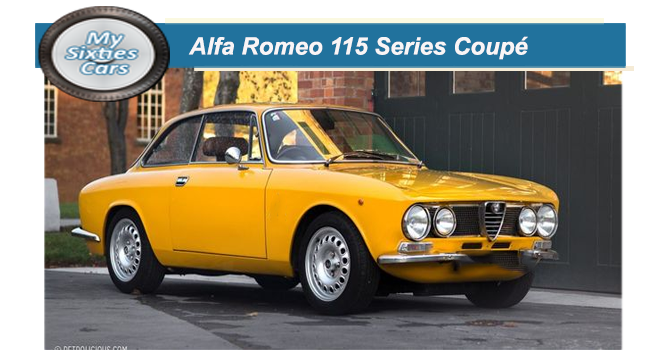
Fitted with the same shortened floor plan used in the Giulia Berlina sedan, the 105/115 series Coupés were designed for Alfa Romeo by the talented Italian designer Giorgetto Giugiaro, at that time just beginning his involvement with the Bertone Design Studio of Turin.
M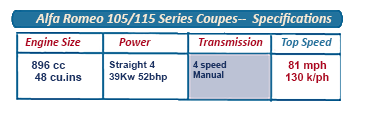 uch of the inspiration that Giugiaro put into designing the 105/115 series apparently came from earlier designs that he made for Alfa, in particular the 2000 and 2600 Sprints,
uch of the inspiration that Giugiaro put into designing the 105/115 series apparently came from earlier designs that he made for Alfa, in particular the 2000 and 2600 Sprints,
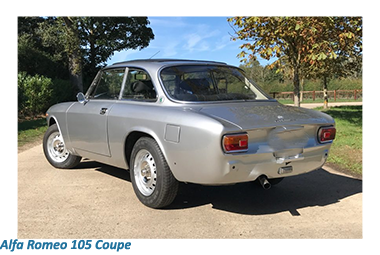 Once again Alfa Romeo succeeded in capturing the most ideal balance of metal and glass, ideally complemented by a flat grille with incorporated headlamps, a groundbreaking styling feature for cars of the early Sixties.
Once again Alfa Romeo succeeded in capturing the most ideal balance of metal and glass, ideally complemented by a flat grille with incorporated headlamps, a groundbreaking styling feature for cars of the early Sixties.
Alfa Romeo offered the 105/115 coupes in a total of five design variations, the Sprint GT, the Sprint GTC, the Sprint GTV, the 1750 GTV and the GT 1300 Junior.
Of the five, the Alfa Romeo GT 1300 Junior was by far and away from the best seller. Of the 172, 245 models sold the GT 1300 Junior made up for more than half. ![]()
As its title readily suggests, the GT Junior range were fitted with engines that had considerably smaller cubic capacities than its stablemates.
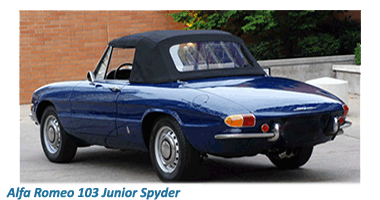
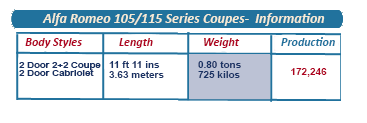
Another issue that Alfa Romeo took very seriously into account at that time was that in Italy, cars were taxed according to their engine capacity, a factor that helped to keep the GT Junior within the financial reach of many young Italians.
I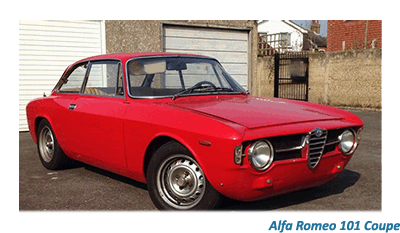 rrespective of size, all the 105/115 series models came fitted with the same lightweight four cylinders, Twin Cam engine, although cubic capacities ranging from 1290 cc to 1962 cc, matched up to five-speed manual transmission.
rrespective of size, all the 105/115 series models came fitted with the same lightweight four cylinders, Twin Cam engine, although cubic capacities ranging from 1290 cc to 1962 cc, matched up to five-speed manual transmission.
All of the engines powering the 105 series coupes came with twin carburettors, with the exception of the 1750 GTV and 2000 GTV models for export into the United States, that were fitted with fuel injection while disc brakes were standard on all four wheels.






